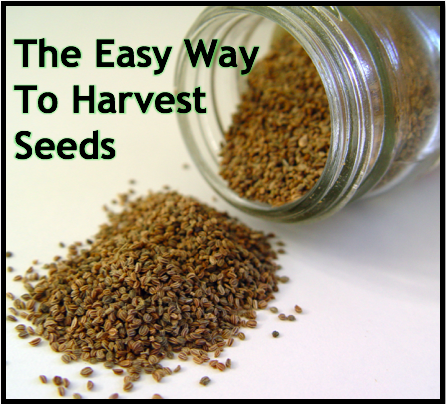I want to learn, and hone, how to harvest seeds from my garden for the next year’s crop. To me, it is the ultimate in self reliance! No more seed ordering every year or the expense that goes with it. Not that my seed cost is huge, mind you, but that’s not the point. The problem is, I have a lazy streak that doesn’t do me any favors.
Because of that, I tend to try and learn the easier things first. It helps me feel like I am accomplishing something and able to see some results more quickly. I’ve fiddled around with seed saving before, successfully at that, but I feel I got lucky more than anything. I got a wild hair and decided to take a few pinto beans from a bag I had in the pantry and planted them to see what would happen. Well, the plant grew and a few pods survived the slug battle of 2014. I ended up getting a small handful of beans that eventually ended up in a soup pot but hey, I did it!
Beyond peas and beans, however, are things like carrots and onions. What about those? You plant them, then harvest and never see any signs of seeds. That’s because they are a biennial plant – meaning they need two years to fulfill its full life cycle. To get seeds, you need to let the plants overwinter and grow again. While the carrots and onions are still edible the second year, they aren’t very palatable.
The plants will flower and make seeds that you harvest when dried! Simple as that. You don’t need to let that many plants overwinter, either! Depending how large your crops are of each type of biennial, it’s unlikely you would need more than 5 (3 should be sufficient in all honesty). Each plant will give you dozens, if not hundreds, of seeds but it’s always wide to plan for crop failure. If you only have 2 carrots that you let overwinter and they both fail, you’re sunk. It’s also a good idea to not have all the ones you’re going to let ‘go to seed’ in one area. This will reduce the chance of it all going bad or succumbing to pests or other issues.
To me, it seems lazy – almost like you’re cheating! “All I have to do is not pick a few carrots or onions and I get seeds?” Yes. Now, the trick is to make sure you leave behind a few each year for the next year’s crops. Over time, and so many seasons, your plants will have evolved some to better survive in the climate you are growing in. It’s just nature’s way of adapting! A fine example is the garlic we grow. We got several bulbs from a lady who has been growing the same variety in her garden for over 20 years. The variety is a Killarney Red which grows well in a wet climate in general. We have a really wet climate and it holds up to the hard winds and feet of rain it will get in a growing season.
Speaking of garlic, and growing it, this is another ‘seed’ that is just about the easiest seed to harvest and plant! The cloves themselves are the seed! Take note: garlic will not split properly unless you plant it in the fall before the first freeze. For more information on how I learned that particular lesson, click here (will open in new tab)!
There are many other plants that are biennials and make for some incredibly easy seed harvesting:
- Cabbage
- Beets
- Kale
- Brussel Sprouts
- Parsley
- Celery
- Turnips
- Parsnips
- Leeks
With a little research, you’ll realize that you can get off the revolving seed ordering ride and start saving your own instead! Just make sure they are good and dry before storing them. Generally speaking, the flowers that will grow seed pods dry out and you just have to shake the pod into a bowl to get the seeds. See? Incredibly easy!





I’m lazy too! 🙂 Actually, I’m super busy. But I’ve always wanted to save seeds. I didn’t know you could overwinter carrots and other root veggies and get seeds! I’ll try that this upcoming year. I let me chickens in our garden after the fall harvest and all winter long—so I think I’ll do a separate planting of carrots somewhere and give the overwinter thing a try! Thanks! Heidi
You are very welcome!